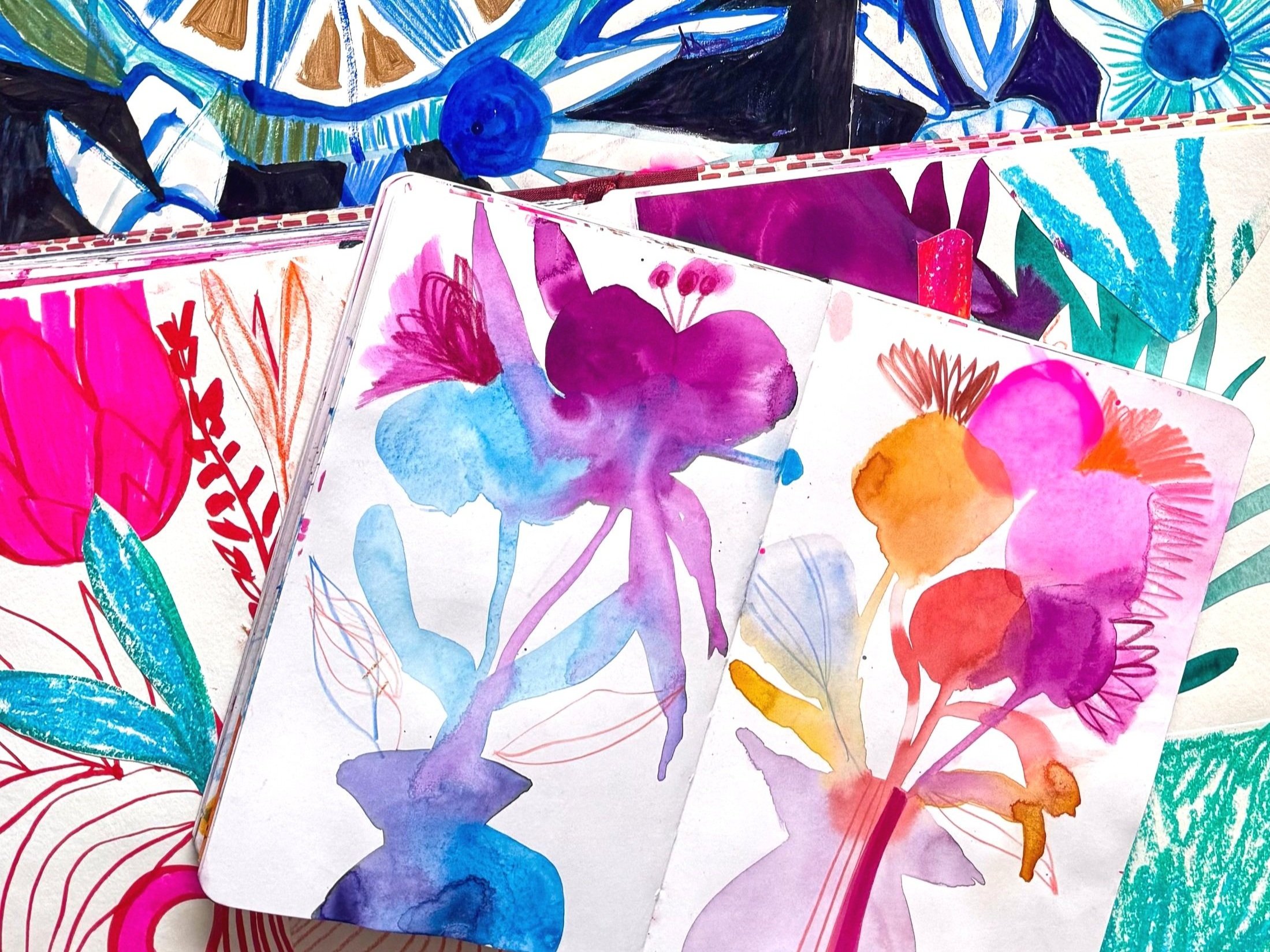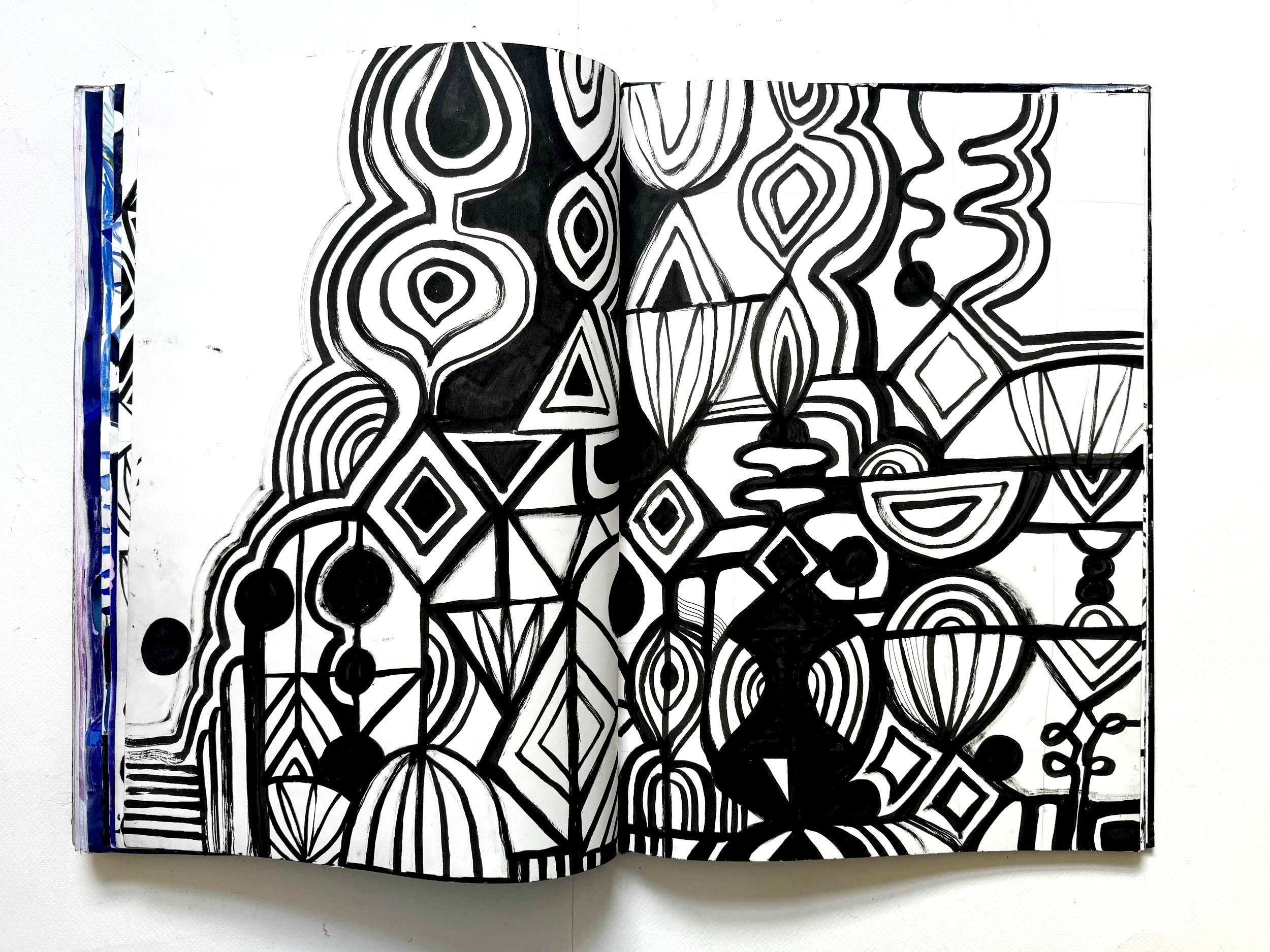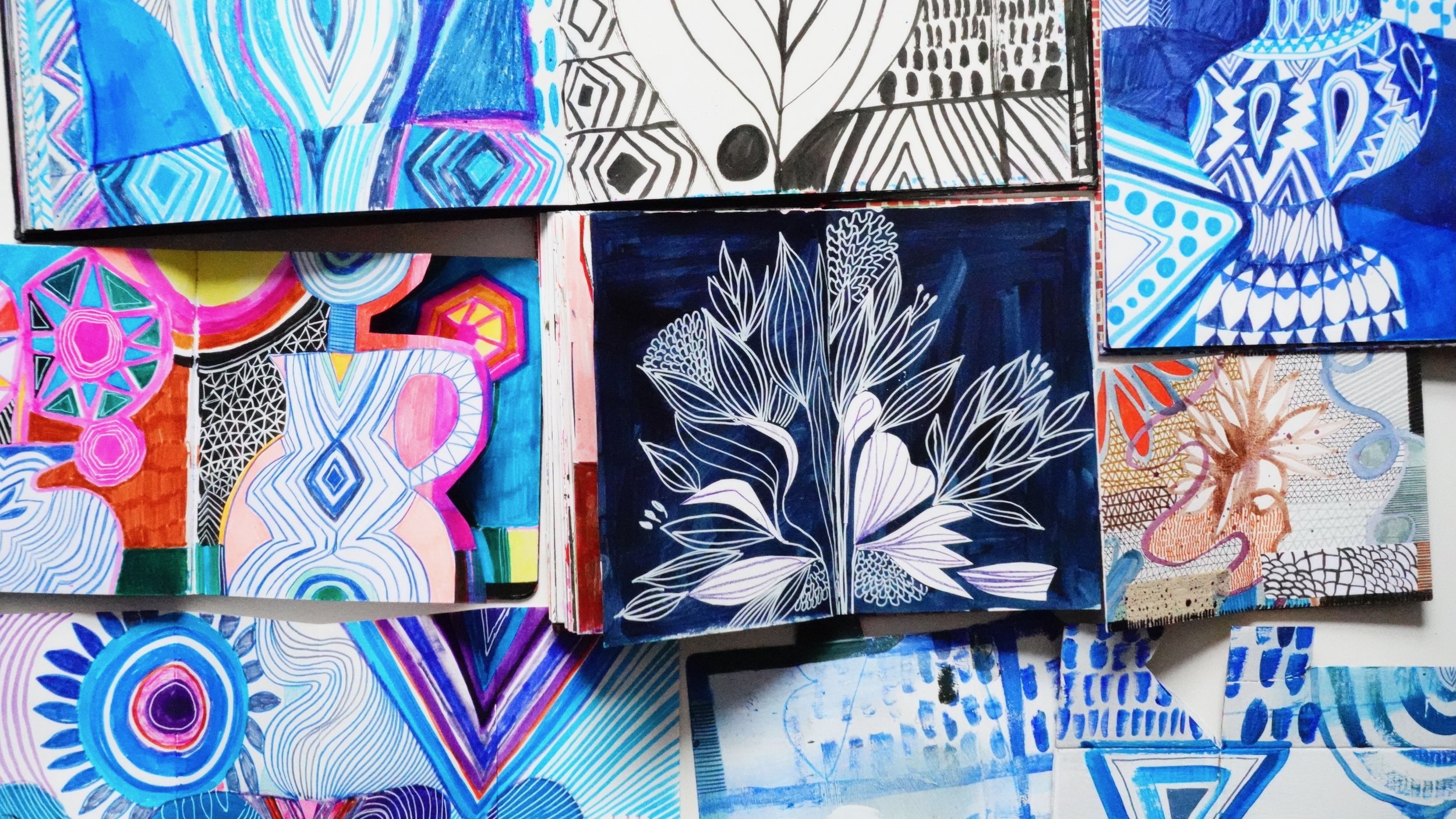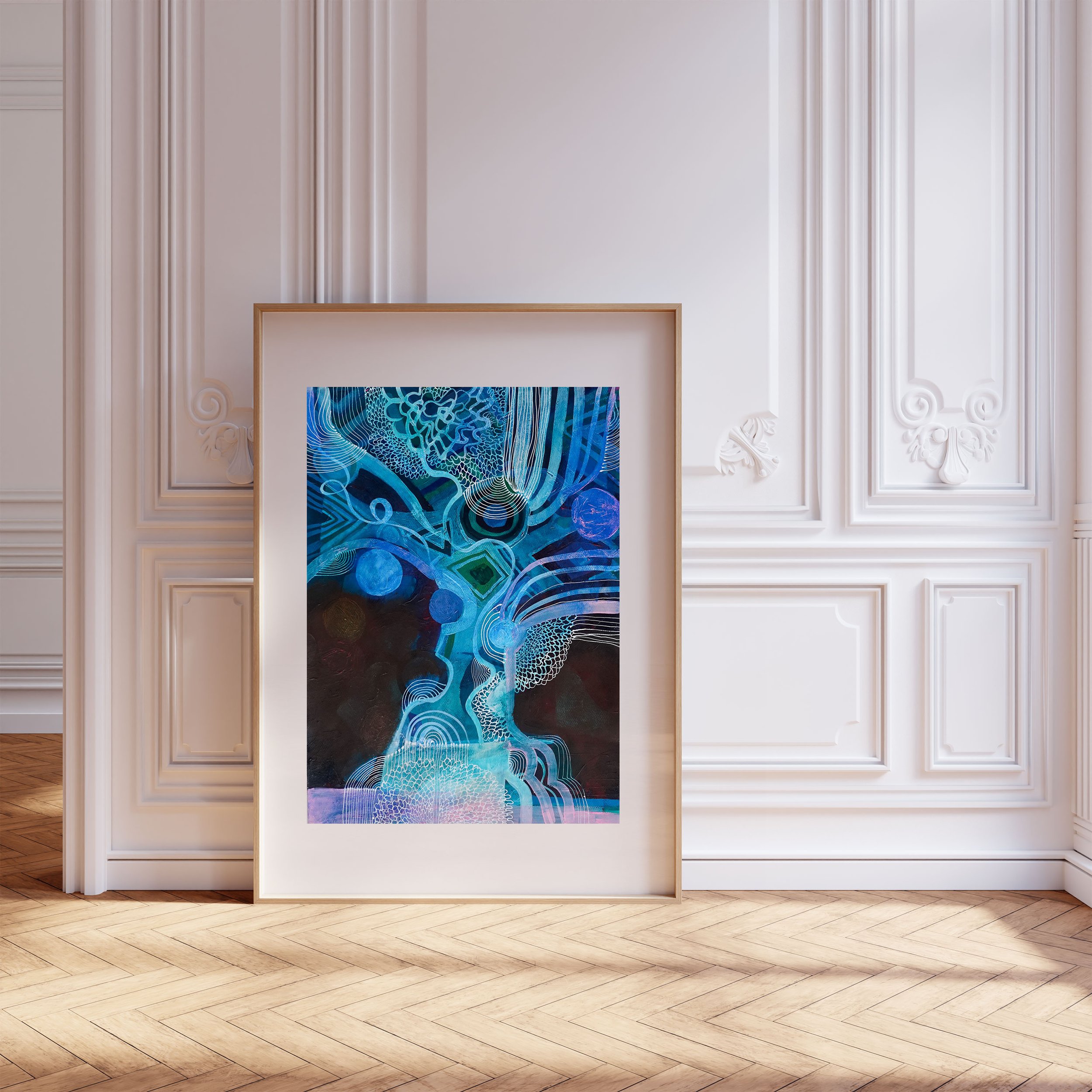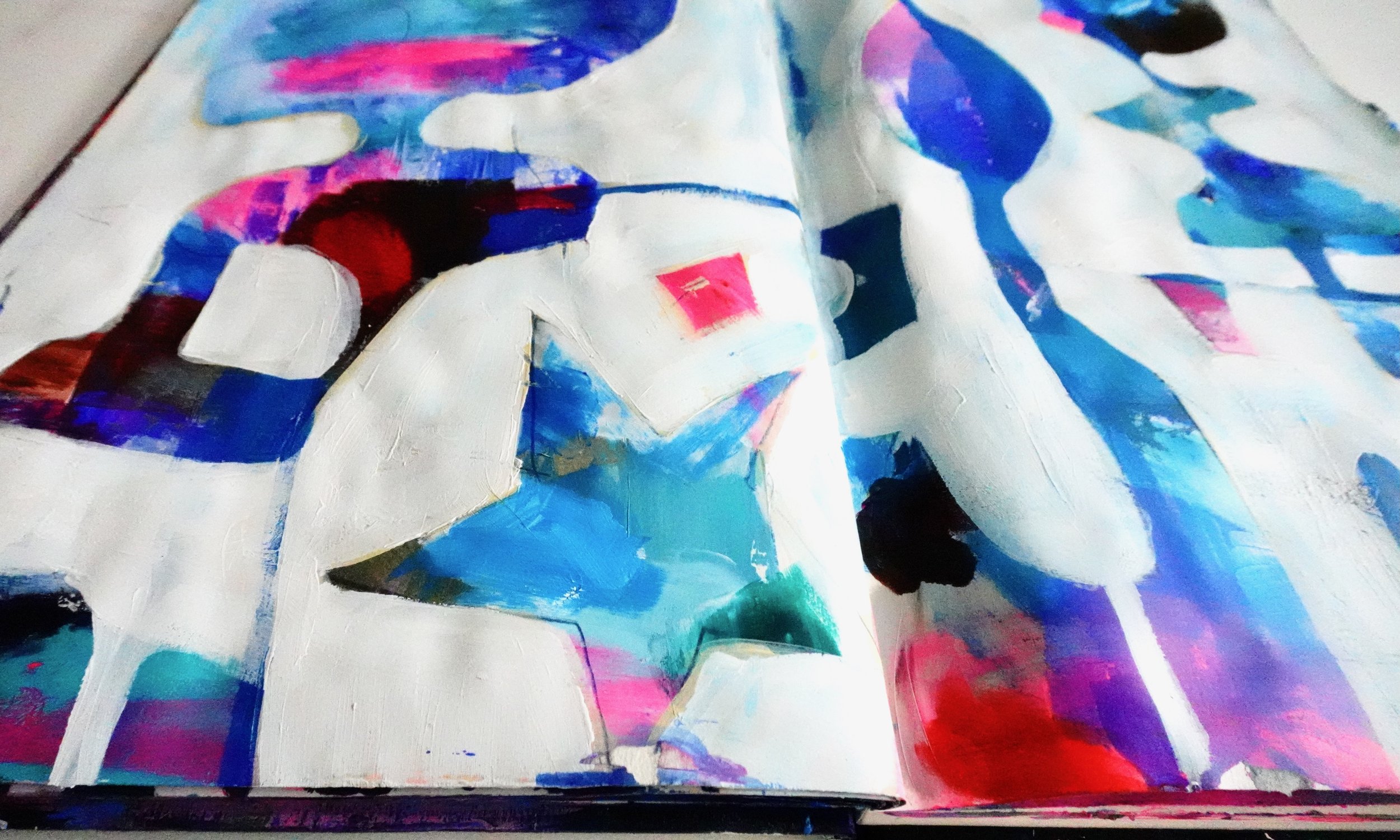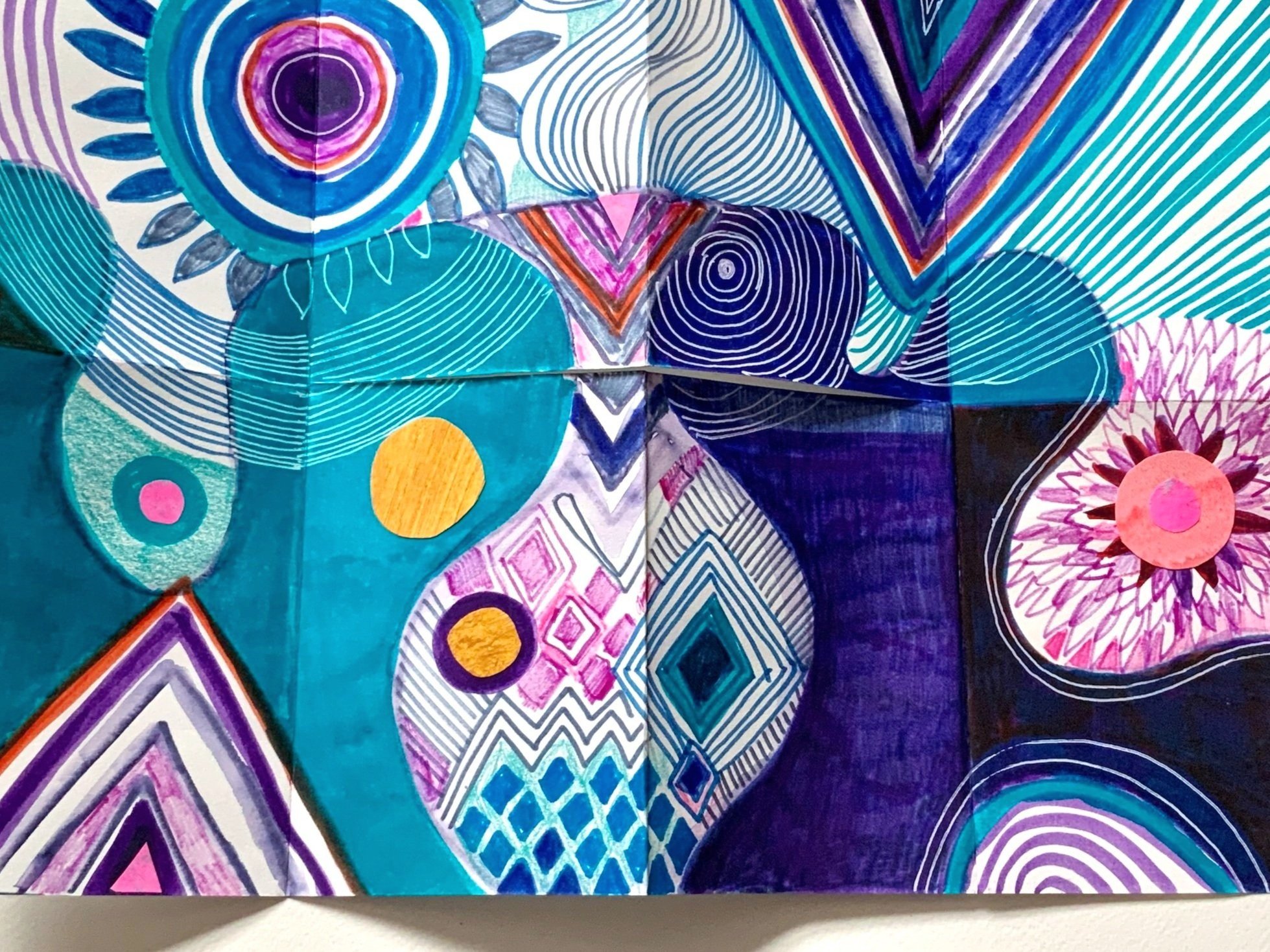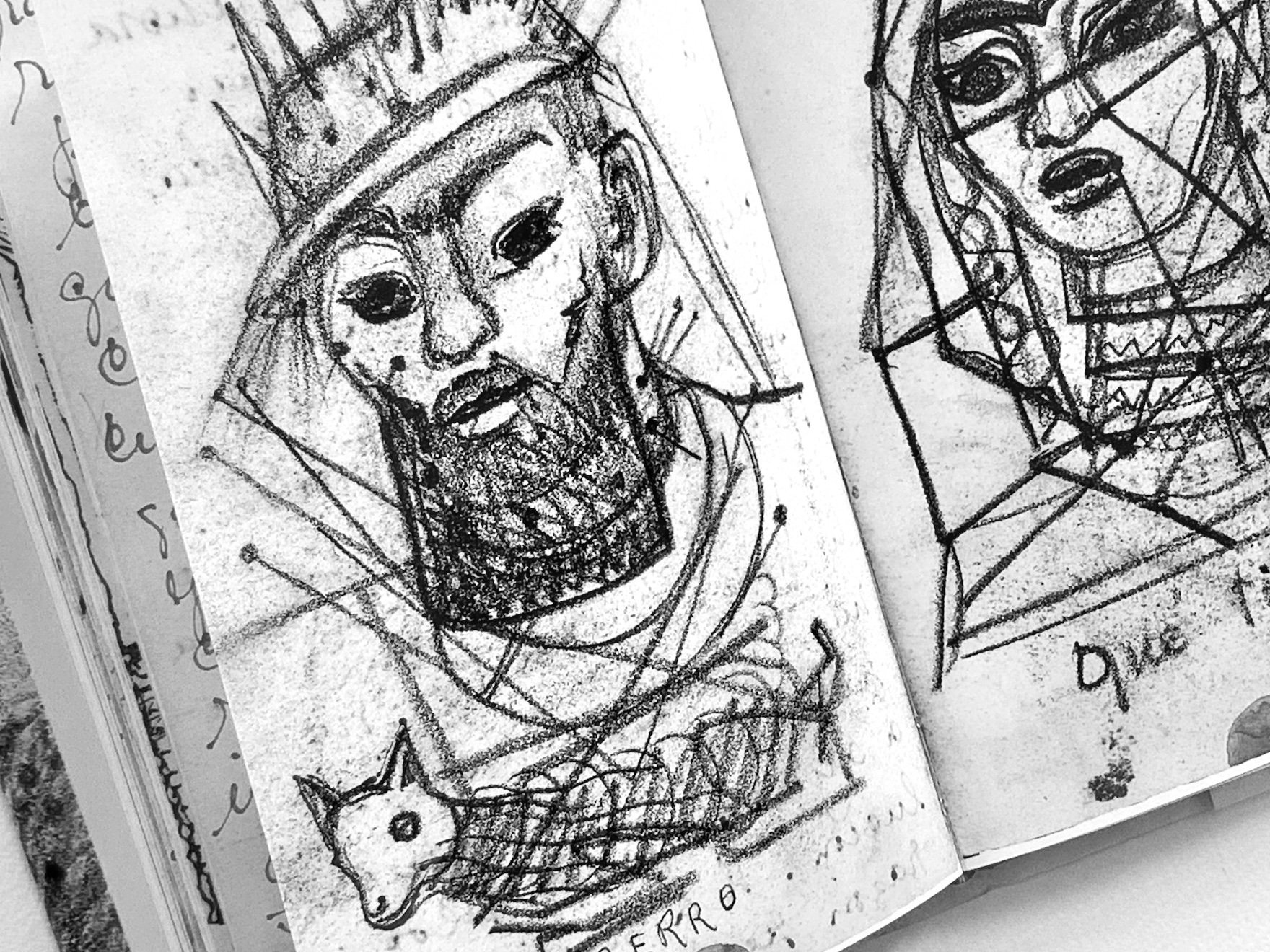
Art making ideasi
Ideas. Inspiration. A little creative mischief.
If you’re drawn to abstract and semi-abstract art, sketchbooks, colour and a little creative mischief, this is your corner of the internet.
Here you’ll find stories, videos, inspiration, art making advice and gentle nudges to help you create art that feels exciting to you.
Balancing chaos and focus in art making
Here I share some thoughts on how creativity works…
A mixed media sketchbook tour
Searching for joy and delight, a mixed media sketchbook tour and thoughts on fitting in a sketchbook practice...
Love of Pattern
This is a love letter to pattern. Take my patterned sketchbook tour and see some art books to inspire…
How to make a simple sketchbook
Learn how to make a simple concertina book which can be turned into a more regular sketchbook with a little glue…
Art and life: sketchbooks, paintings and art books
Tracing how my sketchbooks influence my paintings and sharing some favourite art books…
Searching for joy and delight
A tour through my mixed media sketchbook and a speedy art demo using Indian ink
Art demo: abstract painting inspired by shapes
A practical tutorial about painting abstract pages inspired by shapes…
Painting: a process of discovery
Painting is often like setting off on an adventure with no idea of the destination



